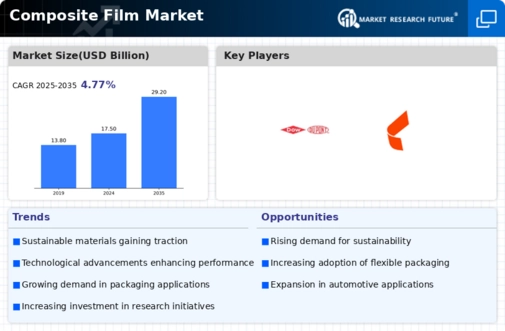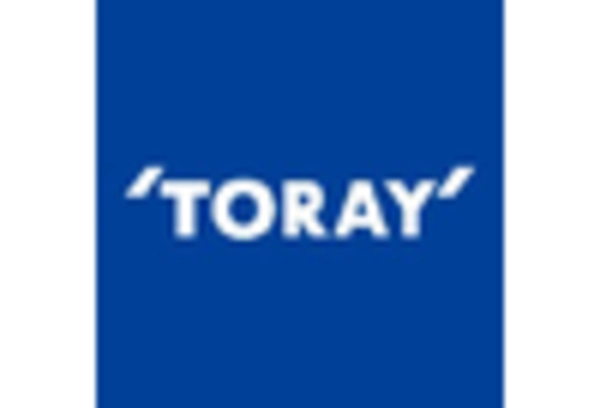Market Growth Projections
The Global Composite Film Market Industry is projected to experience substantial growth over the next decade. With a market value anticipated to reach 17.5 USD Billion in 2024 and 29.2 USD Billion by 2035, the industry is on a promising trajectory. The compound annual growth rate of 4.77% from 2025 to 2035 indicates a sustained demand for composite films across various applications. This growth is driven by factors such as technological advancements, increasing sustainability initiatives, and expanding applications in sectors like healthcare and electronics.
Growth in the Electronics Sector
The electronics sector significantly contributes to the expansion of the Global Composite Film Market Industry. Composite films are increasingly utilized in the production of electronic components, such as capacitors and displays, due to their superior electrical insulation properties and thermal stability. The rising demand for consumer electronics, including smartphones and wearable devices, further drives this trend. As the electronics industry continues to evolve, the market is expected to grow, potentially reaching 29.2 USD Billion by 2035, underscoring the critical role of composite films in enhancing electronic product performance.
Expanding Applications in Healthcare
The healthcare sector is emerging as a vital driver for the Global Composite Film Market Industry. Composite films are increasingly utilized in medical packaging, wound care, and drug delivery systems due to their biocompatibility and protective properties. The growing focus on patient safety and product integrity in healthcare applications necessitates the use of high-quality composite films. As healthcare demands evolve, the market is poised for growth, with potential applications expanding into new areas such as telemedicine and personalized medicine, further enhancing the relevance of composite films in this critical sector.
Rising Demand for Flexible Packaging
The Global Composite Film Market Industry experiences a notable surge in demand for flexible packaging solutions. This trend is largely driven by the growing preference for lightweight and durable materials in various sectors, including food and beverage, pharmaceuticals, and consumer goods. Flexible packaging not only enhances product shelf life but also reduces material waste, aligning with sustainability goals. As a result, the market is projected to reach 17.5 USD Billion in 2024, reflecting a significant shift towards innovative packaging solutions that cater to consumer preferences for convenience and sustainability.
Sustainability Initiatives and Regulations
Sustainability initiatives and regulatory frameworks are shaping the Global Composite Film Market Industry. Governments worldwide are implementing stringent regulations aimed at reducing plastic waste and promoting eco-friendly materials. This regulatory environment encourages manufacturers to develop biodegradable and recyclable composite films, aligning with global sustainability goals. As companies adapt to these regulations, the demand for sustainable composite films is likely to increase, fostering innovation and driving market growth. The emphasis on sustainability could lead to a more significant market presence for eco-friendly composite films in the coming years.
Technological Advancements in Film Production
Technological innovations in film production processes are propelling the Global Composite Film Market Industry forward. Advanced manufacturing techniques, such as extrusion and lamination, enable the production of high-performance composite films with enhanced barrier properties and mechanical strength. These advancements facilitate the development of films that meet stringent regulatory standards across various applications. As manufacturers adopt these technologies, the market is likely to witness a compound annual growth rate of 4.77% from 2025 to 2035, indicating a robust growth trajectory fueled by continuous improvements in production capabilities.

















Leave a Comment